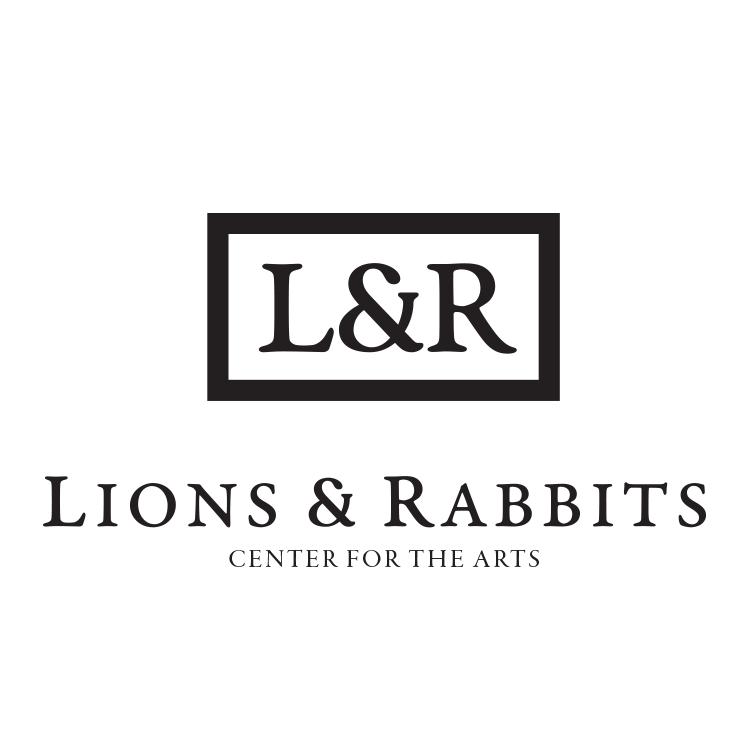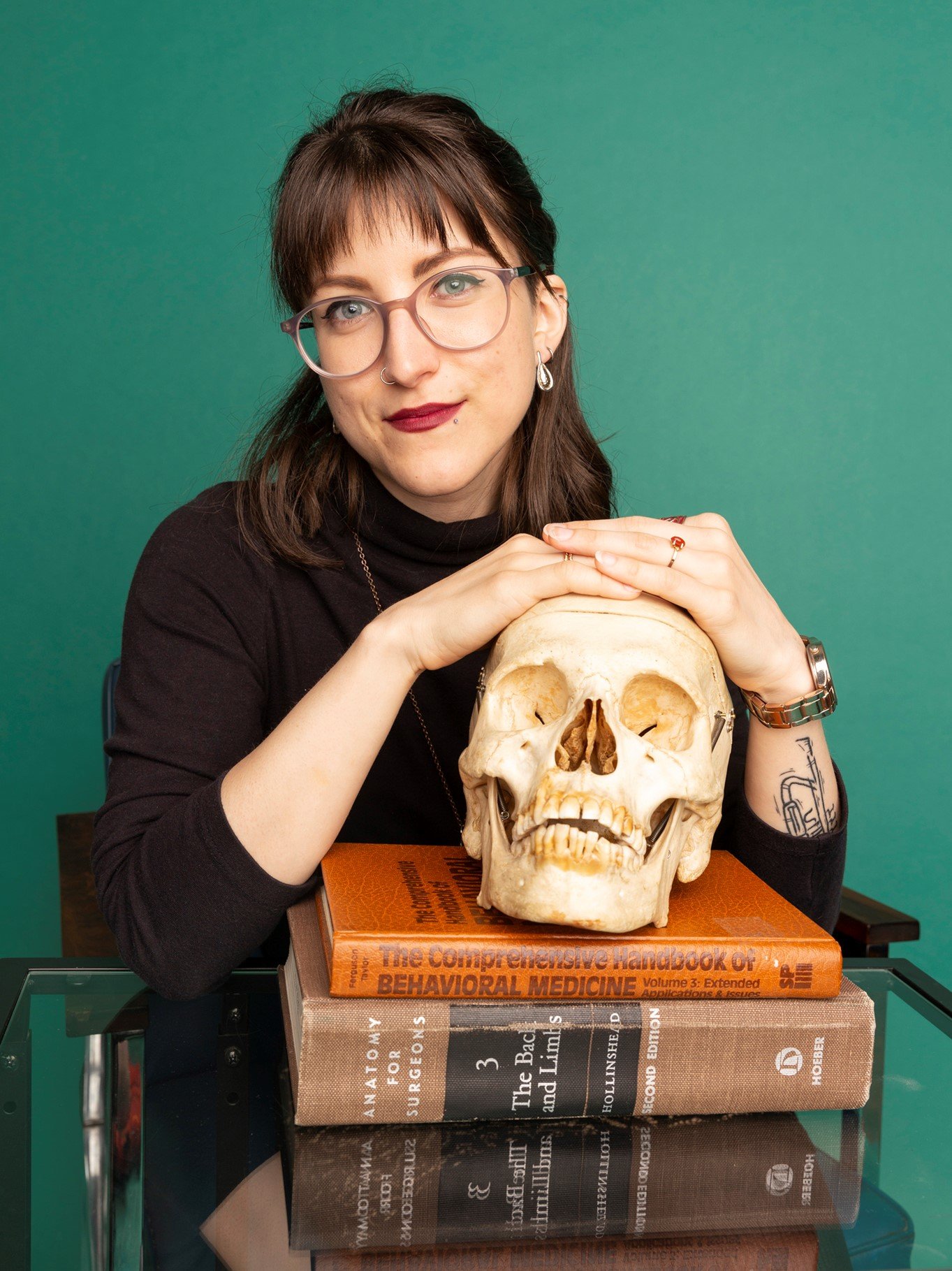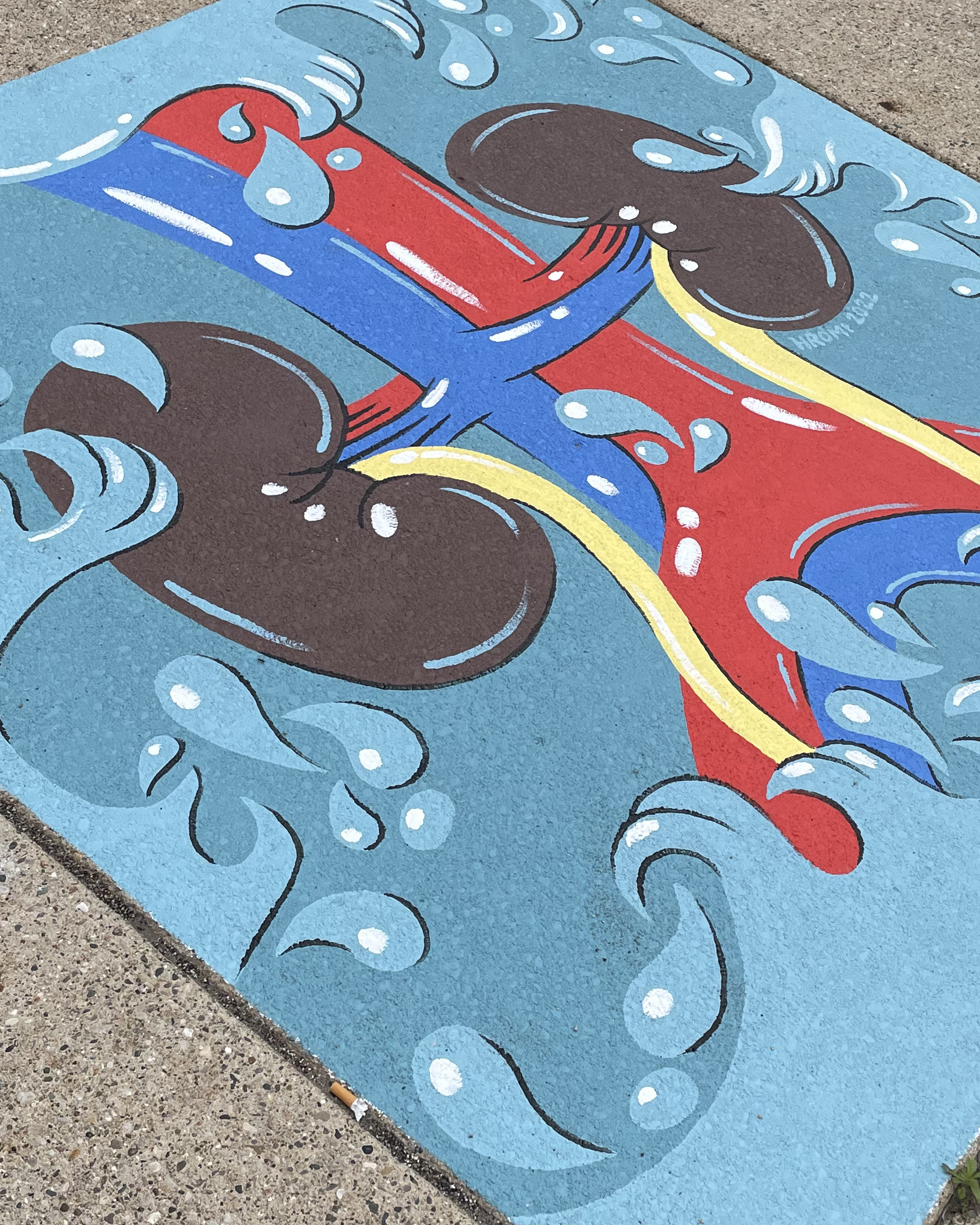Emily Hromi: Meet the Artist
I'm Emily Hromi, founder and lead creative of Studio Hromi LLC and its medical illustration division Hromi Biomedical. I am a self-employed medical illustrator and designer based in Grand Rapids, Michigan. Originally from Ohio, I earned my BFA in Biomedical Art from the Cleveland Institute of Art in 2014 and moved to Grand Rapids shortly thereafter. Studio Hromi has officially been in business since August 2019 and supports dozens of clients and collaborators in Grand Rapids and worldwide with medical illustration, commercial illustration, graphic design, and other creative services. I am currently pursuing Board Certification and am an active professional member of the Association of Medical Illustrators and a two-time AMI Salon award winner.
Q: How did you get involved with Lions and Rabbits?
A: I originally met Hannah Berry in 2019 when she presented at a CreativeMornings event, which was held at the Grand Rapids Public Museum's planetarium, where I worked at the time.
Q: Run us through your creative process: Medium? How do you start, flow and finish?
A: In my professional work, I am primarily a digital artist unless it's a specific output that demands physical media (but even then, the ideation and design planning occur in the digital space). Depending on the project, I typically work with some combination of Adobe Illustrator, Adobe Photoshop, and Procreate. Most of my work is client- or collaborator-driven, so the timeline for most projects includes heavy research at the beginning (especially for medical illustration clients), reviews at various stages along the way, and final sign-off and approval at the end. The start, flow, and finish are very straightforward when I'm supporting somebody who is an expert in the subject matter of the content I'm creating, but I approach each project like a visual problem that I am helping them to solve.
Q: What themes/ideas are highlighted in your work? Intentions?
A: This is a tough question to answer when I'm so often supporting other people who dictate the subject matter of my work! With medical illustration especially it's really important to clearly convey the educational message of whatever it is I'm illustrating, and I think that mindset of clarity and precision has carried over into my other work as well. I often say that my personal creative practice is inspired by "science and the everyday," whether or not those things are obvious or overt to the viewer.
Muskegon Bunker Elementary Mural
Q: Can you share more about how your career as an artist began?
A: I graduated from the Cleveland Institute of Art in 2014, but while I was still in school I had a couple of formative internships (Medical Illustration Intern at the Cleveland Clinic and Exhibit Design Intern at the Dittrick Museum of Medical History) as well as a part-time job as a Student Medical Illustrator at the Cleveland FES Center that all formed a really solid foundation for me as I was beginning my career. Although I struggled to find a job somewhere as a medical illustrator when I moved to Grand Rapids, I did land a creative role at the Grand Rapids Public Museum as their Planetarium Production Technician, which spiraled me into an unexpected five-year career detour in the planetarium industry. While working at the Public Museum I also gained some management experience, and additionally maintained a handful of freelance clients throughout those five years, which all eventually combined to lead me to start my own business and become self-employed in 2019.
Q: What obstacles/struggles have you encountered throughout your career as an artist? Or challenges you face within your creative process
A: Deciding to leave a full-time job with a salary and benefits to be self-employed was certainly a challenge. It was ultimately the best choice I could have made for myself, but behind the scenes there was almost a full year of severe mental health struggles and uncertainty while I laid out a plan for myself and what would become my business. I was fortunate to achieve and maintain success from the very start, but being self-employed continues to be scary and unpredictable in all the best and worst ways. Creatively speaking, the main challenge I deal with is finding time to make art just for the sake of making art. It's wonderful to be a working artist with a steady stream of clients, but I have to be really deliberate about my personal creative practice.
Q: Who/what are your biggest inspirations that play a key role in your work?
A: As I mentioned before, "science and the everyday" come to mind, but it's more than just that. I follow a lot of other artists and I keep up with practices and standards in the medical illustration industry, so ultimately all of that inspires me and indirectly feeds into the work I produce. I also really love a theme and a series, so every once in awhile I'll go off on a tangent of just drawing nothing but houses or something (for instance) and then that turns into a bigger project or a service that I end up being able to monetize.
Q: What mistakes have you made? What did you learn from them?
A: When I first became self-employed I was always anxious and apologetic when pricing jobs because I assumed clients would be upset or try to bring the price down, so to avoid that conflict I would often quote lower than what I should have actually been charging. I also used to let clients negotiate some pretty bad terms that have probably hurt me financially in the long-run. When you're freelancing you never really know when your next client will come along, and when you're brand new to freelancing it's easy to fall into the trap of saying yes to everything no matter how low-paying it is or how bad the terms are for you the artist. Four years in, I've gotten a lot better at pricing jobs and nailing down licensing and registering my copyrights, but it's still an ongoing process to overcome the imposter phenomenon that makes all of those things so uncomfortable.
Q: Do you feel supported by your community as an artist? In what ways could you feel more supported?
A: For the most part I feel supported. On a personal level, every once in awhile that comes crashing down when I meet somebody who has an astronomical misunderstanding of what an art career is and can be. On a more societal level, I wish that the tourism industry in Grand Rapids got as excited about independent art galleries and small local artists as it does about ArtPrize.
Q: What is the function of artists in society? What does being an artist mean to you?
A: Artists bring beauty and function to society. On one hand there is fine art and entertainment, but on the other there are household objects and things we interact with every day that at some point had a designer involved in the process of their creation. My particular niche as an artist also means that I'm a scientist and an educator, so some artists also bring knowledge to society. To me, being an artist means that I'm able to support myself doing something that feels fulfilling and comes naturally to me. I don't believe that everybody needs to feel obligated to monetize their hobbies and skills, but for me it has been the right decision and I'm grateful for it.
Storm Drains 2022
Q: Describe a moment when you felt most proud of yourself
A: When I first began freelancing full-time I also had a part-time job for some extra safety net income. It was nice to have a reliable paycheck, but I also really liked the job and didn't mind that it took up a couple of days each week. About two and a half years into being self-employed, I finally decided it was time that I didn't need that job anymore since my client workload was steady and somewhat predictable. It's difficult to leave a fun job that you like, but I was proud to be at the point where I felt I could be 100% independent. Having 15-18 extra hours free each week has meant that I can be more dependable to my clients, but has also opened up a lot of new opportunities for me such as public art (thanks Lions and Rabbits!), more art markets and pop-ups, and more varied clients and types of creative services I can offer.
Q: What are you currently working on or looking forward to?
A: On March 23 and 24, 2023 I'll be the visual artist in the planetarium alongside local musician Jordan Hamilton for Concerts Under the Stars, which is a series I actually started when I worked at the Grand Rapids Public Museum. It's been a few years since I've created animations and artwork for the planetarium dome, but I'm really excited to have been invited back for this. It feels like things are coming full circle. At the time of writing this I've literally just started to get to work on my video art for these shows, so hopefully I'll have some snippets to share soon!
Q: Finish this sentence…”Artists are _____________”
A: This isn't quite grammatically correct but: artists are everybody; and by that I mean everybody is an artist! I think somewhere not so deep down, each person has huge creative potential and not enough people allow themselves to explore it.
Q: BONUS: If you could chose any superpower, what would it be?🦸🏻♀️⚡️🌀
A: Telepathy. I stutter, so sometimes I just think it would be more efficient to transmit my thoughts directly to other people, you know?
Follow more of Emily’s work on www.studiohromi.com
Instagram: @studiohromi
Thank you for tuning into this week’s Meet the Artist, be sure to checkout more artist stories every week on our blog!
Want to support more artists just like this? DONATE to LRCFA




